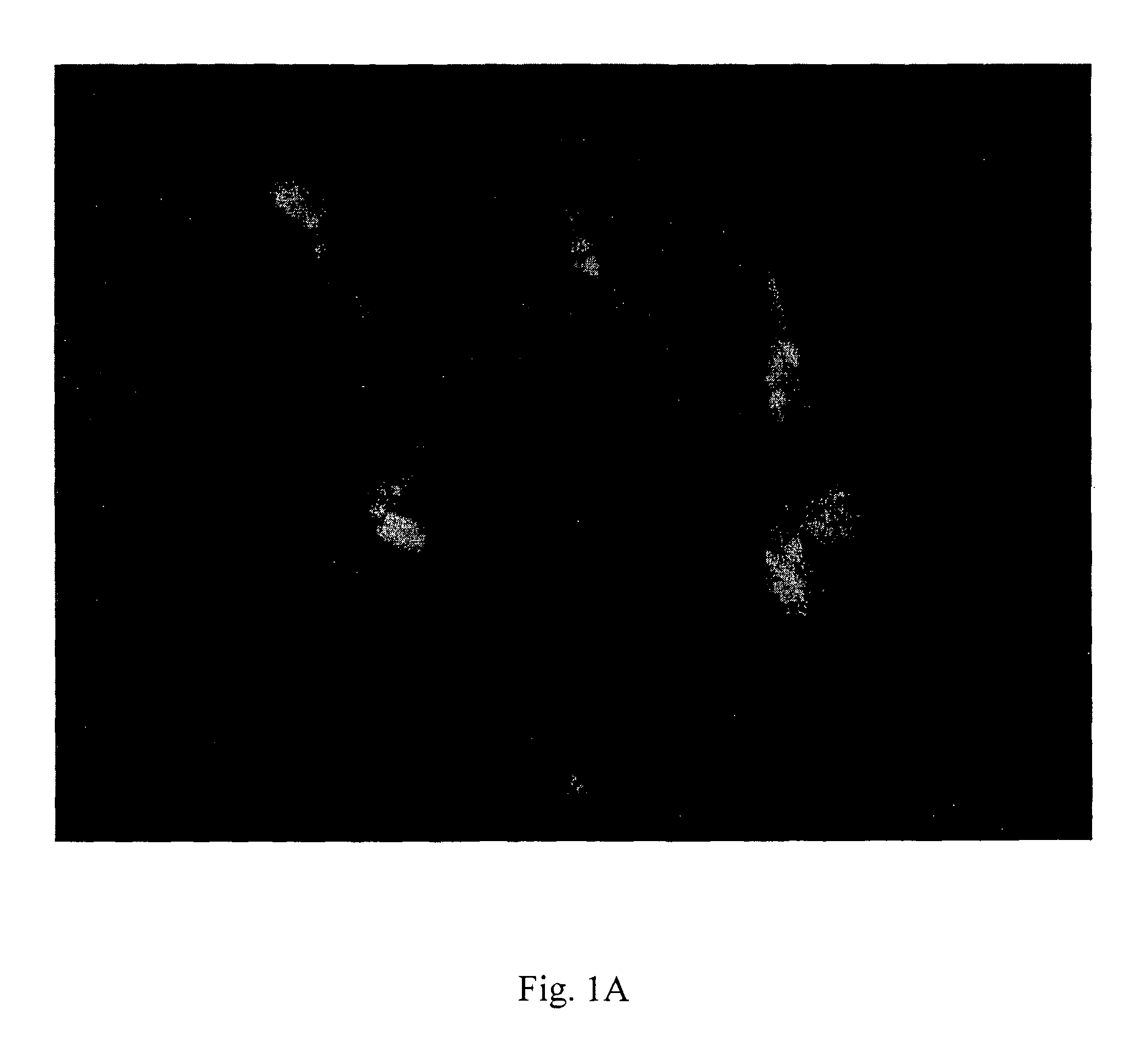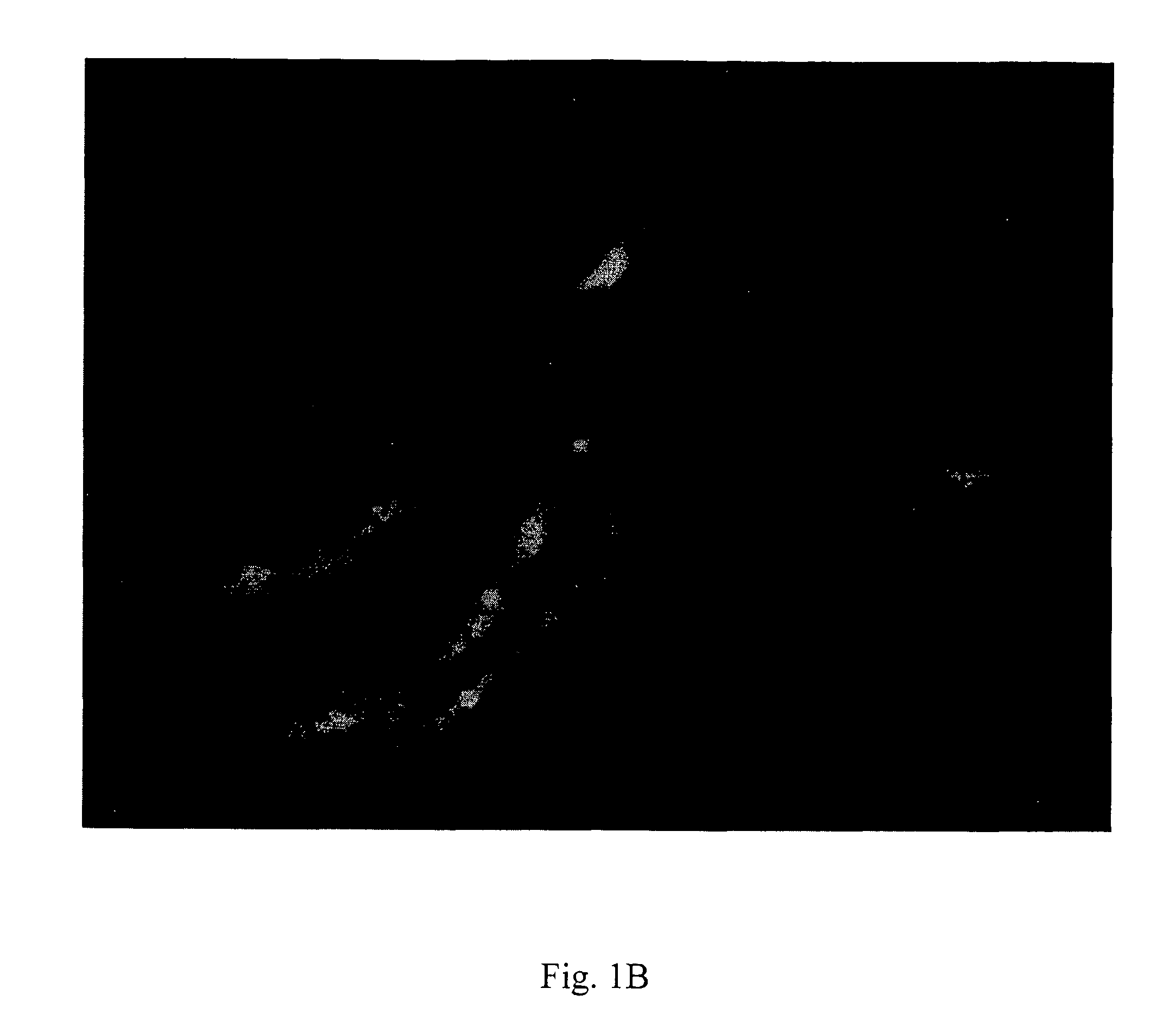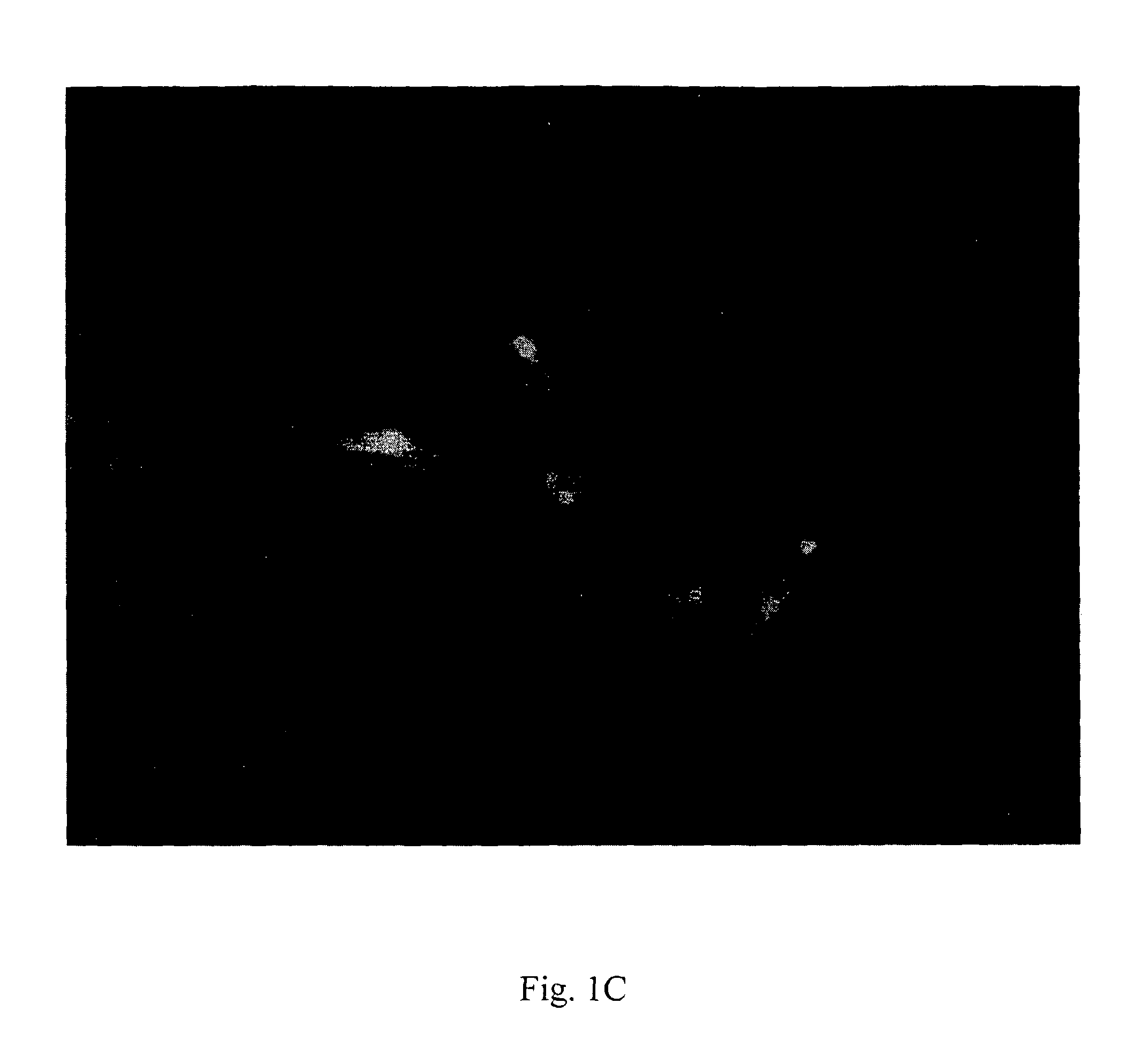Assay for drug discovery based on in vitro differentiated cells
a cell-based, drug-based technology, applied in the field of cell-based assays, can solve the problems of affecting the development of new drugs, lack of suitable cell-based in vitro, and the inability to achieve stable cardiac phenotype of the cells so obtained, and achieve the effect of enhancing the onset or progression of the diseased phenotyp
- Summary
- Abstract
- Description
- Claims
- Application Information
AI Technical Summary
Benefits of technology
Problems solved by technology
Method used
Image
Examples
example 1
Generation of Hypertrophic Cardiomyocytes from Embryonic Stem Cells
[0220]At present cardiomyocytes prepared from rodent hearts are used as the standard in vitro model to study hypertrophic cardiomyocytes at the molecular level (Chlopcikova et al., Biomed. Pap. Med. Fac. Univ. Palacky Olomouc Czech. Repub. 145 (2001), 49-55). These cells display upon stimulation numerous features of hypertrophic cardiomyocytes in vivo (Chien et al., FASEB J. 5 (1991, 3037-3046). Various substances can be used as hypertrophic stimuli in this system, including endothelins (Shubeita et al., J. Biol. Chem. 265 (1990), 20555-20562; Suzuki et al., FEBS Lett. 268 (1990), 149-151; Ito et al., Circ. Res. 69 (1991), 209-215), 1-adrenergic agonists (Simpson, Circ. Res. 56 (1985), 884-894; Meidell et al., Am. J. Physiol. 251 (1986), H1076-H1084; Henrich and Simpson, J. Mol. Cell. Cardiol. 20 (1988), 1081-1085); and Angiotensin II (Sadoshima and Izumo, Circulation Research 73 (1993), 413-423). Also mechanical sti...
example 2
Up-Regulation of ANF Expression in Mouse ES Cell-Derived Cardiomyocytes Transgenic for Constitutively Active Calcineurin
[0227]Cardiac hypertrophy is an adaptive response of the heart to different stimuli and is accompanied by a variety of changes of the cardiomyocytes at the molecular level. Studies analyzing the features of this process have shown Ca2+ to play a central role, and thus proteins involved in the regulation of Ca2+ homeostasis or proteins regulated by Ca2+ are thought to play a critical role in the hypertrophic response (reviewed in McLennan, Eur. J. Biochem. 267 (2000), 5291-5297; Frey et al., Nat. Med. 6 (2000), 1221-1227). One protein involved in connecting Ca2+ fluctuations and altered gene regulation is the Ca2+-calmodulin-dependent protein phosphatase-2B, calcineurin (reviewed in Rao et al., Annu. Rev. Immunol. 15 (1997), 707-747). An elevation in intracellular calcium increases the activation of calcineurin, which in its activated form dephosphorylates the nucle...
example 3
Effects of Compounds on Hypertrophied Cardiomyocytes
[0229]In order to test if the hypertrophied cardiomyocytes obtained from ES cells as described in Example 1 represent a suitable tool for drug screening purposes, these cells were treated with compounds known to influence hypertrophic growth.
[0230]Puromycin resistant ES cell-derived cardiomyocytes were obtained as described in Example 1 and kept in suspension culture. The hypertrophic phenotype was induced by culturing the cells for 24 h in Medium 199 (Invitrogen), followed by treatment with 100 nM endothelin-1 (ET-1) or 100 μM phenylephrine (PE) and various test substances (Table 1) for 24 h in Medium 199. Subsequently, RNA was extracted using the RNeasy mini kit (Qiagen) followed by RT-PCR to analyse expression of ANF and BNP, two genes up-regulated in hypertrophied cardiomyocytes (see above). cDNA was synthezised, and ANF and BNP cDNAs were amplified by PCR (24 PCR cycles). Primers used for ANF amplification were as given in Exa...
PUM
| Property | Measurement | Unit |
|---|---|---|
| volume | aaaaa | aaaaa |
| humidity | aaaaa | aaaaa |
| humidity | aaaaa | aaaaa |
Abstract
Description
Claims
Application Information
 Login to View More
Login to View More - R&D
- Intellectual Property
- Life Sciences
- Materials
- Tech Scout
- Unparalleled Data Quality
- Higher Quality Content
- 60% Fewer Hallucinations
Browse by: Latest US Patents, China's latest patents, Technical Efficacy Thesaurus, Application Domain, Technology Topic, Popular Technical Reports.
© 2025 PatSnap. All rights reserved.Legal|Privacy policy|Modern Slavery Act Transparency Statement|Sitemap|About US| Contact US: help@patsnap.com



